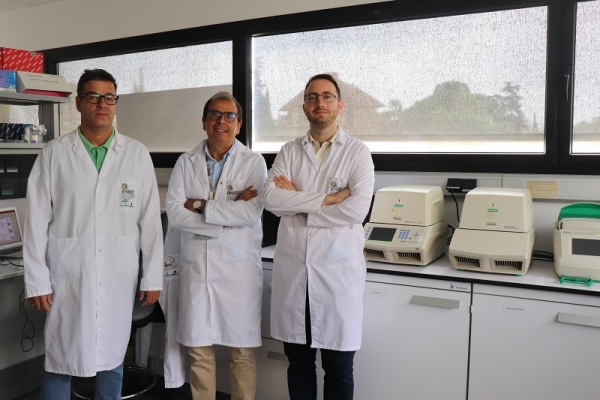An international research team led by the Maimonides Biomedical Research Institute(IMBIC) and the UCO has found that the brain, through regulatory molecules called microRNAs -whose function is to control which genes of a cell are expressed- is able to influence the reproductive capacity of both males and females. The study, published in the journal Nature Communications, confirms that microRNAs affect "the onset of puberty and the maintenance of reproduction in the adult stage", according to Manuel Tena-Sempere, a researcher with the "Hormonal regulation of energy balance, puberty and reproduction" group at the IMIBIC and aprofessor in the UCO's Cell Biology, Physiology and Immunology Department, and co-director, together with Juan Roa, of the study.
Specifically, the team studied the impact of microRNAs on Kiss1 neurons, which are essential for both thepubertal activation of the reproductive axis and for this reproductive axis to function well throughout adulthood. In fact, alterations affecting the Kiss1 system have been associated with the absence of puberty and infertility in humans.
Using transgenic mice in which the synthesis of microRNAs was suppressedin Kiss1 neurons only, the research team found that the mice developed long-term infertility;that is, microRNAs in Kiss1 neurons are indispensable tothe reproductive function because these molecules are responsible for influencing repressors in Kiss1 neurons. Without the microRNAs, these repressors prevent the proper functioning of the reproductive function.
The study has also shown that the time course of microRNA deletion differs between the sexes, in line with differences in the complexity of their reproductive mechanisms, which is generally greater in females. Without microRNAs in Kiss1 neurons, male mice initiated puberty and could become fertile for a short time, while females never reached puberty.
Although this is a basic study whose implications will not be immediate, its resultsopen up new avenues of research, from understanding the basis of some pathologies that affect reproduction, such as infertility, to the use of microRNAs in therapeutic treatments.
Reference:
Juan Roa, Miguel Ruiz-Cruz, Francisco Ruiz-Pino, Rocio Onieva, Maria J. Vazquez, Maria J. Sanchez-Tapia, Jose M. Ruiz-Rodriguez, Veronica Sobrino, Alexia Barroso, Violeta Heras, Inmaculada Velasco, Cecilia Perdices-Lopez, Claes Ohlsson, Maria Soledad Avendaño, Vincent Prevot, Matti Poutanen, Leonor Pinilla, Francisco Gaytan and Manuel Tena-Sempere, "Dicer ablation in Kiss1 neurons impairs puberty and fertility preferentially in female mice", Nature Communications, 13, 4663 (2022), https://doi.org/10.1038/s41467-022-32347-4.


